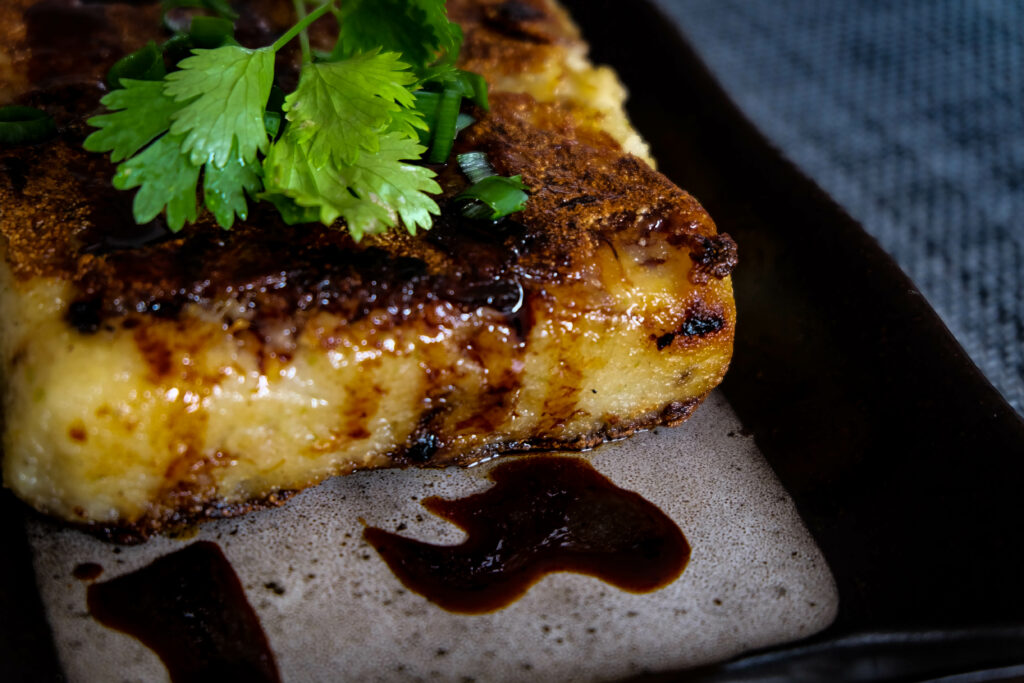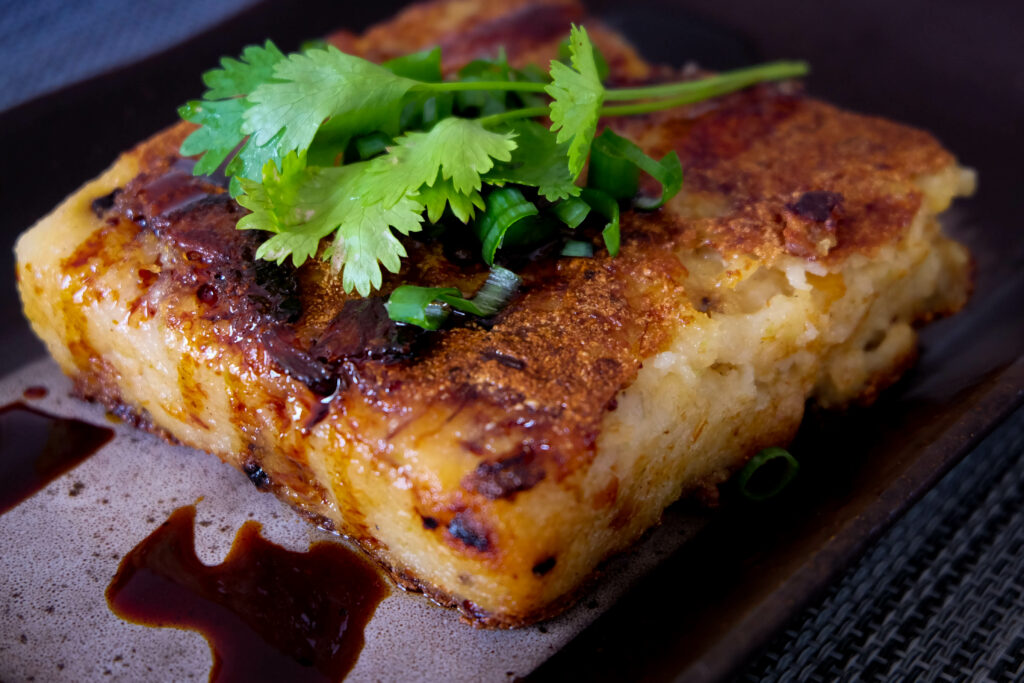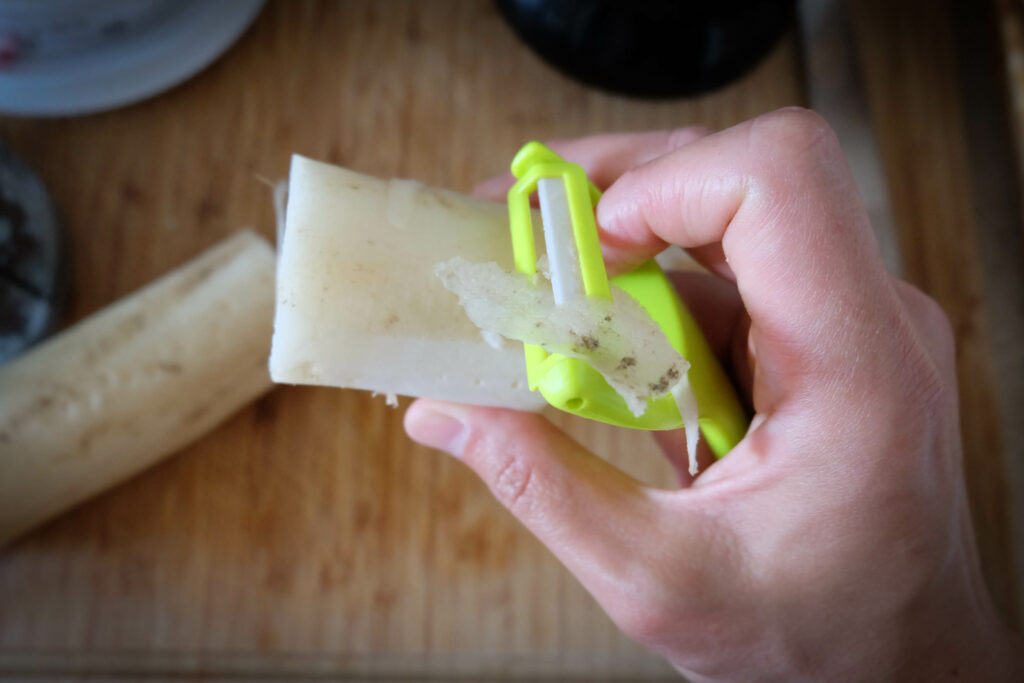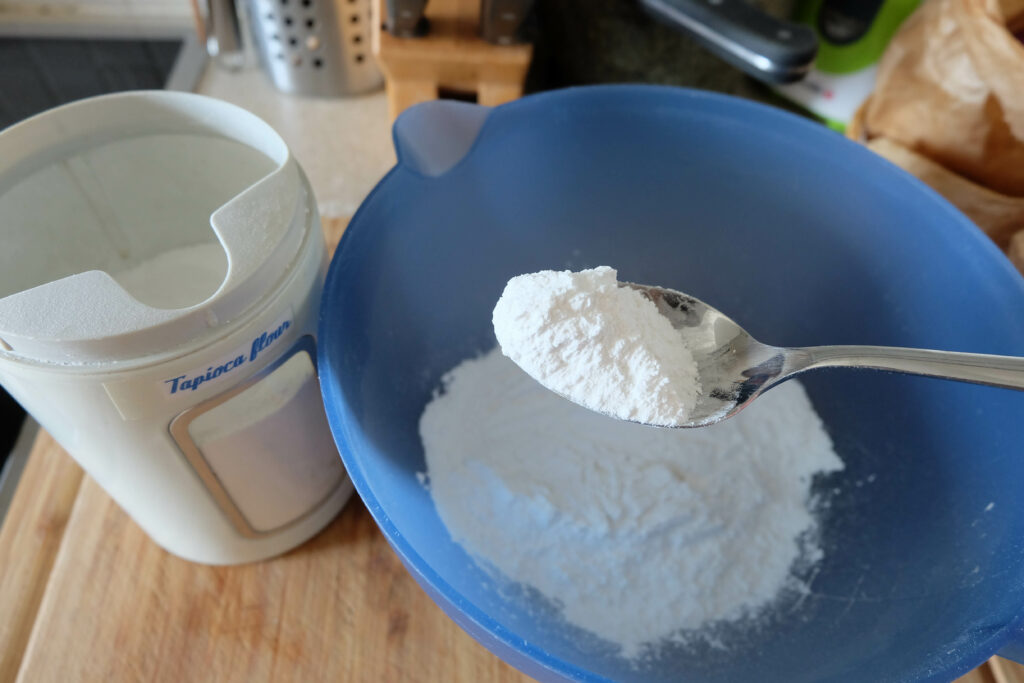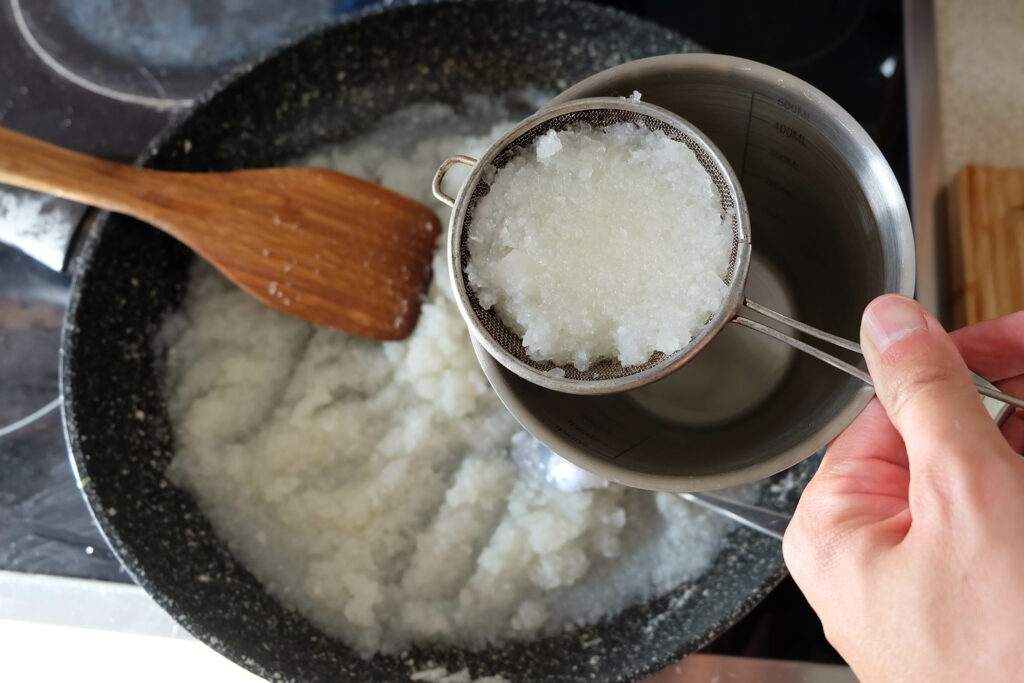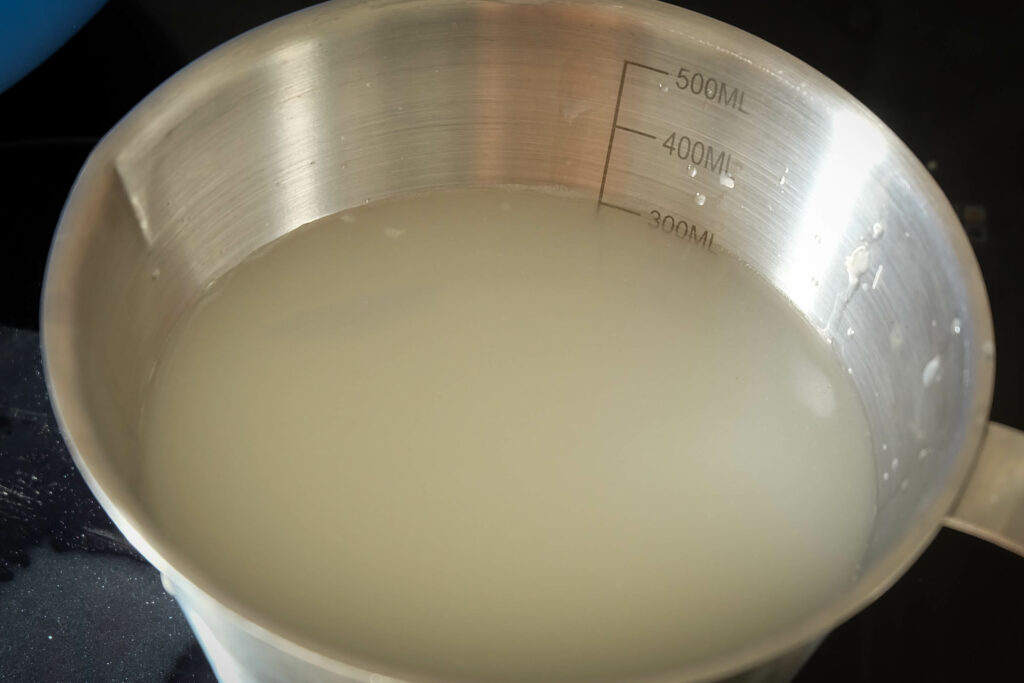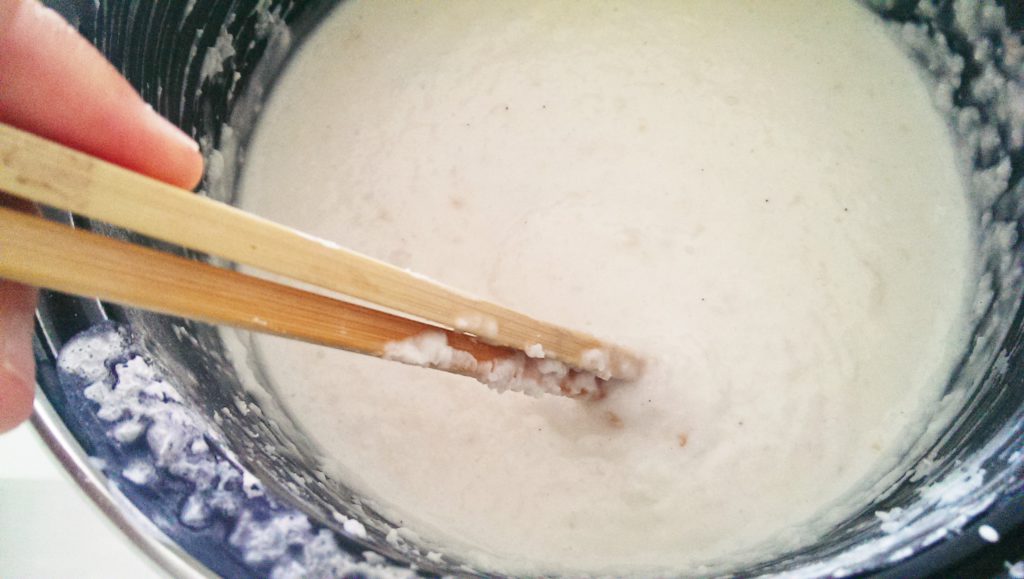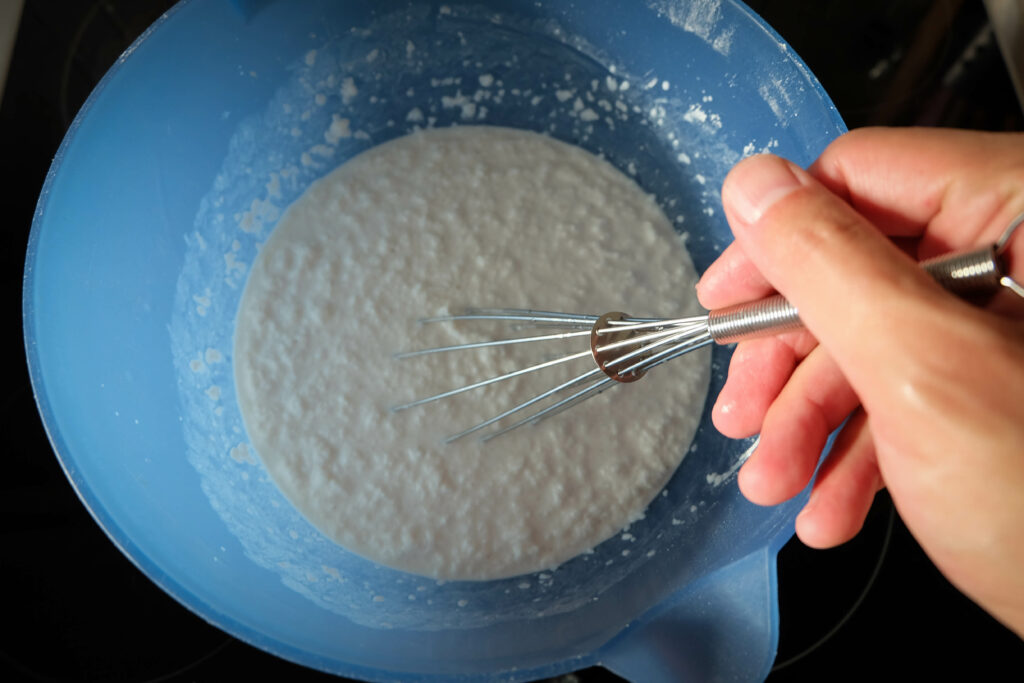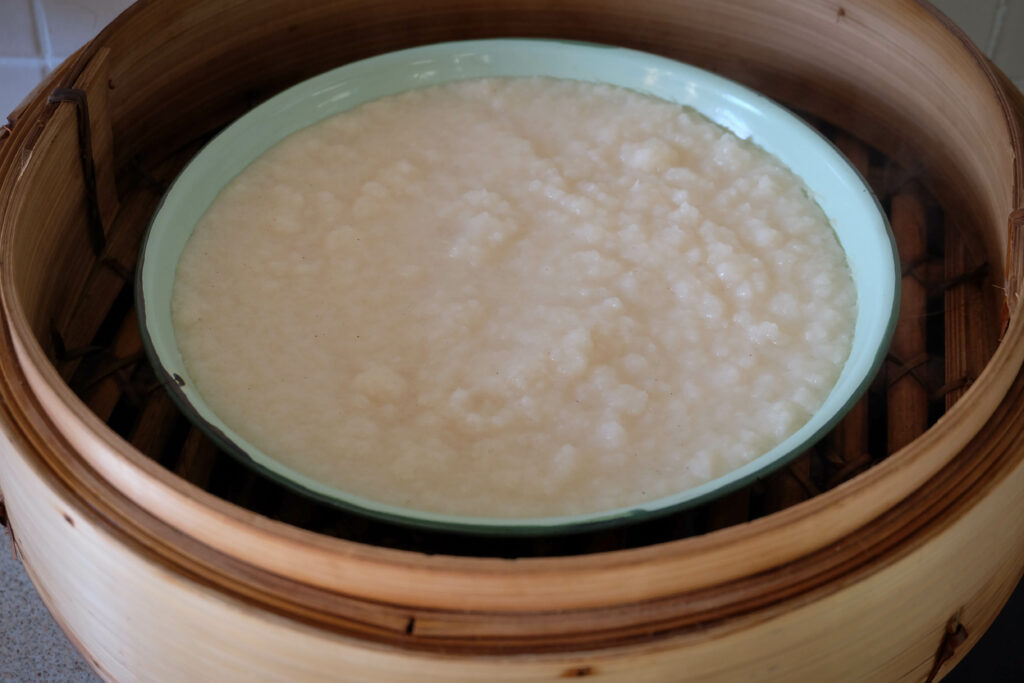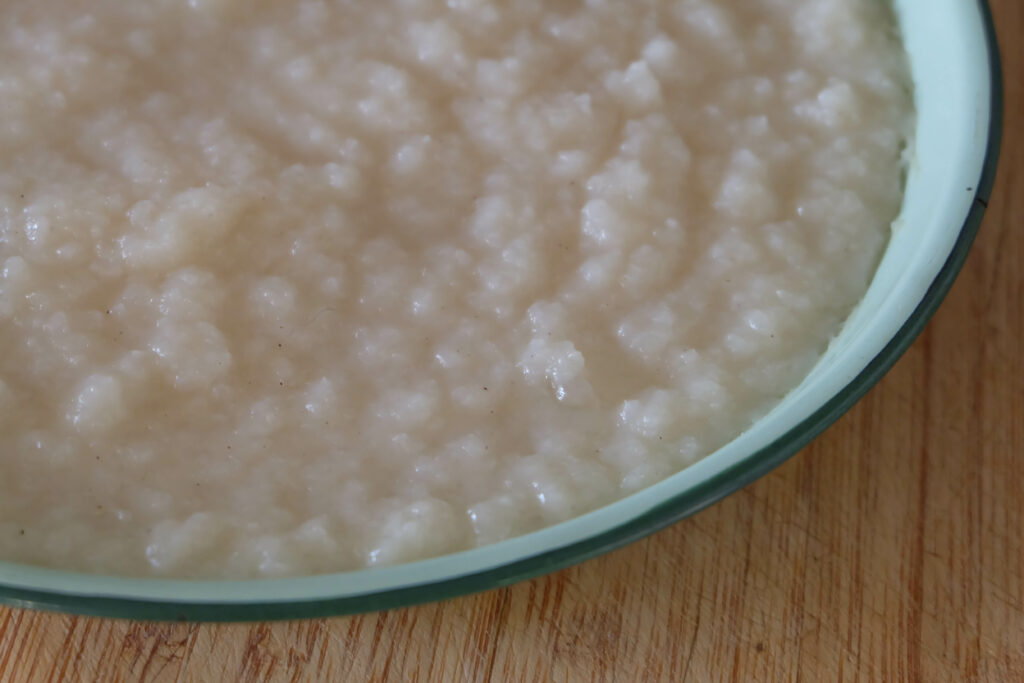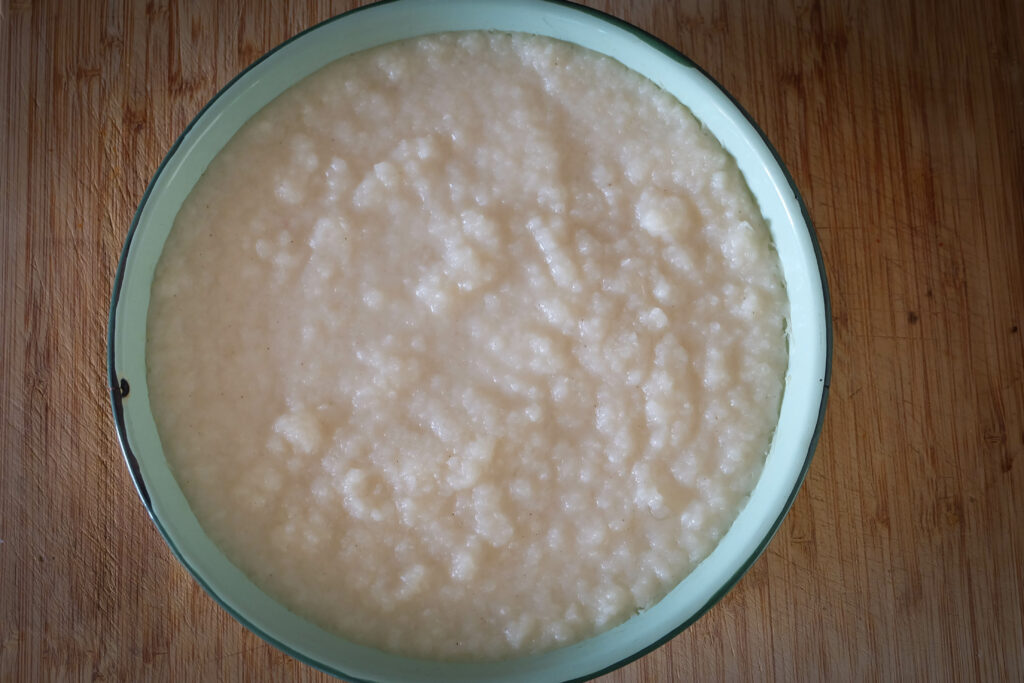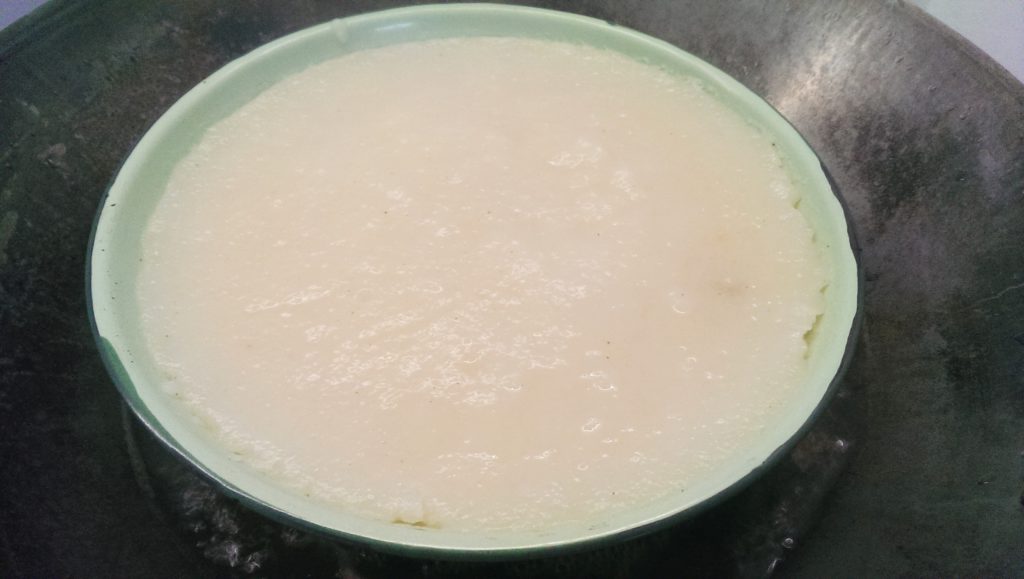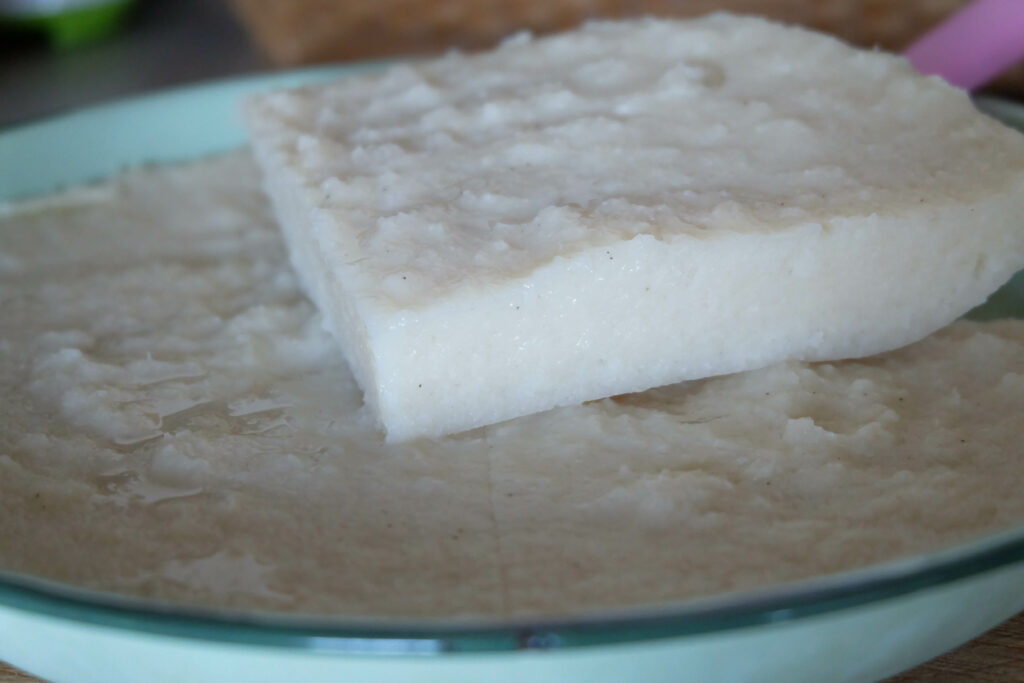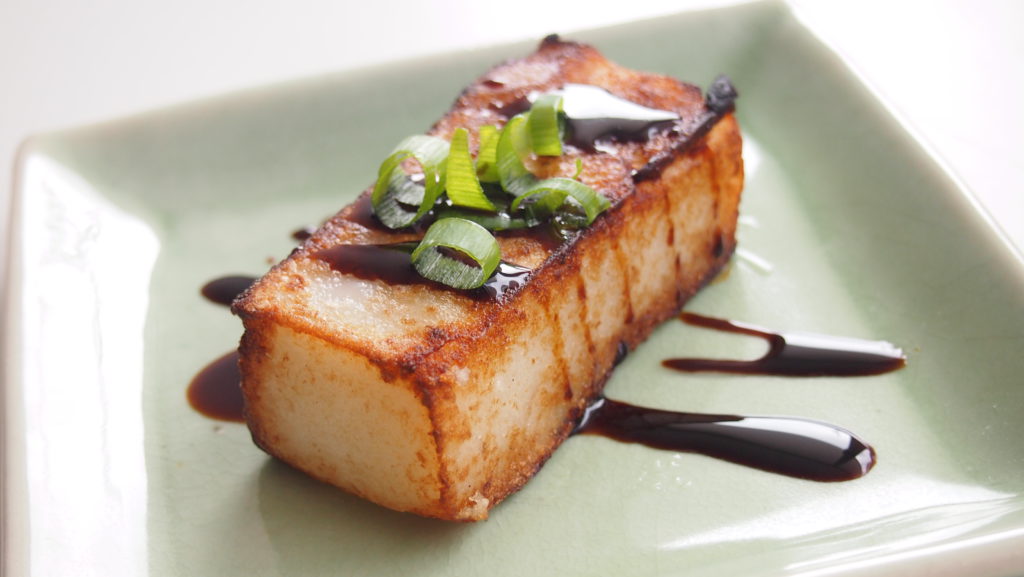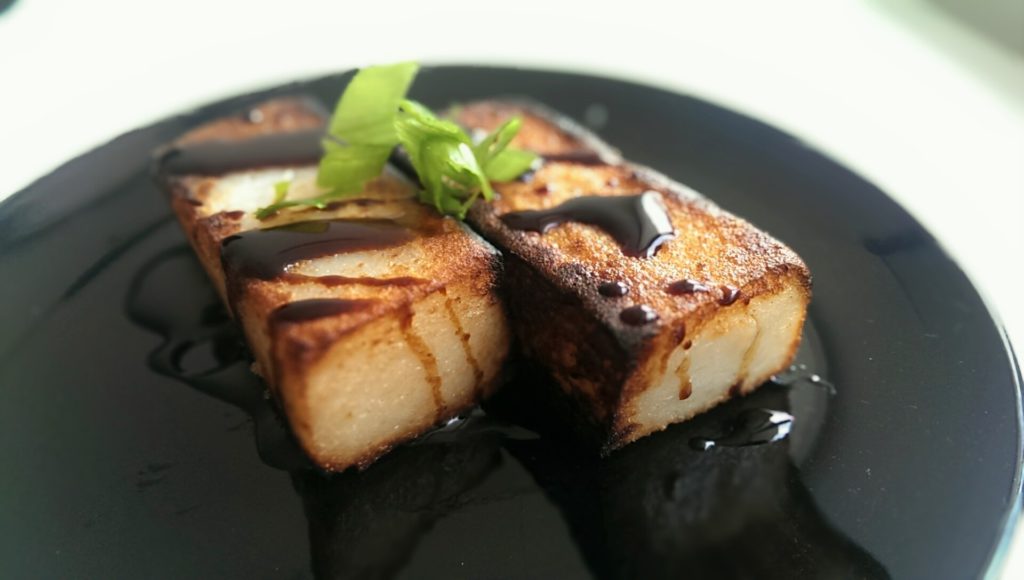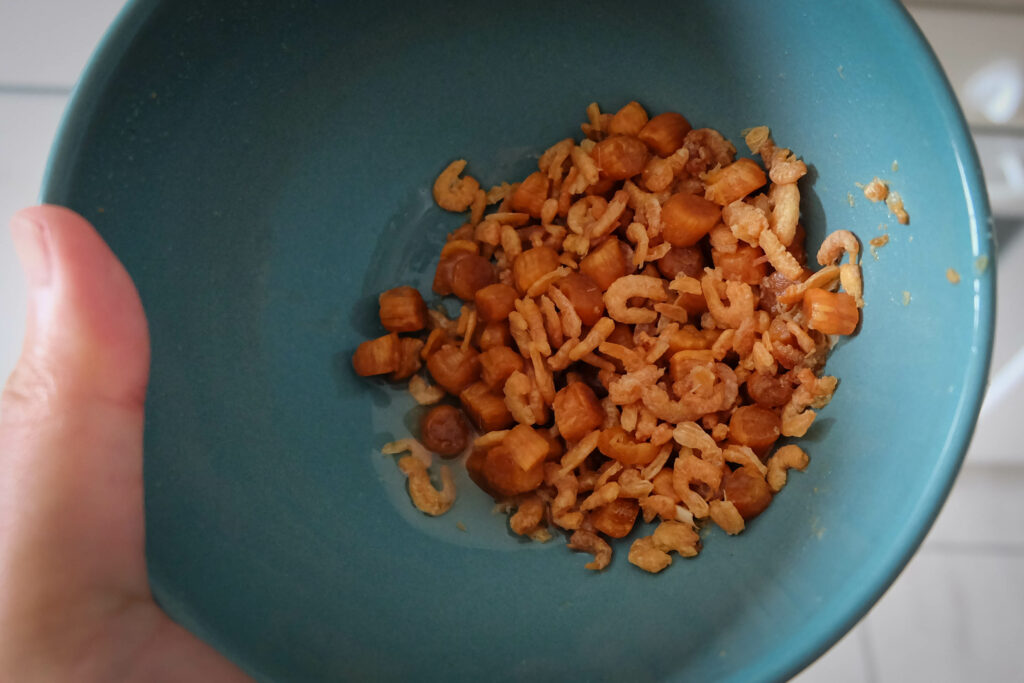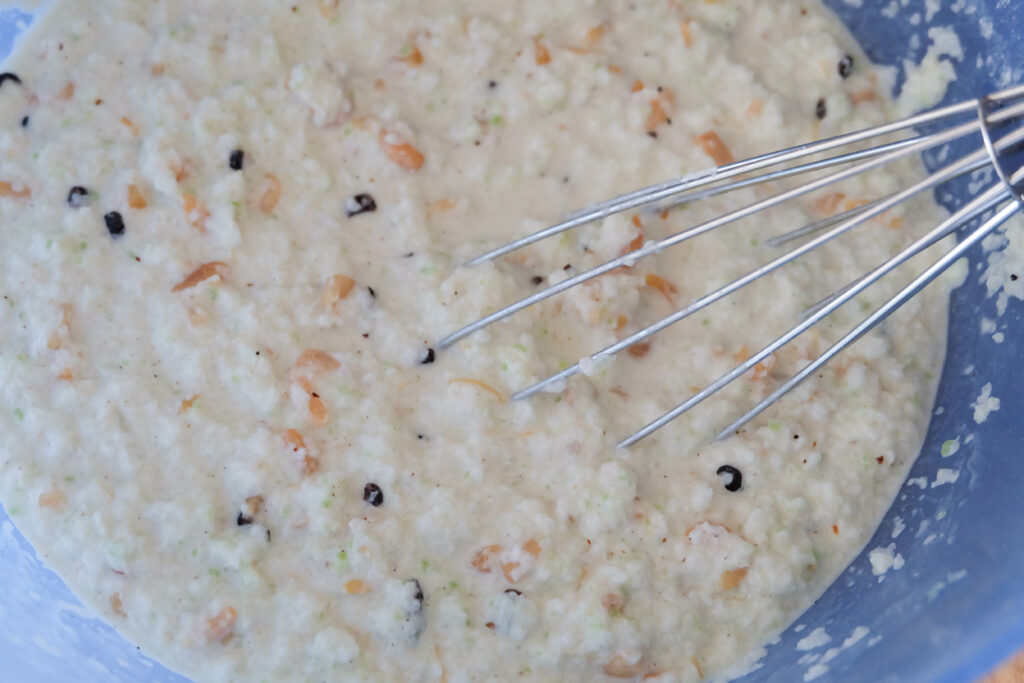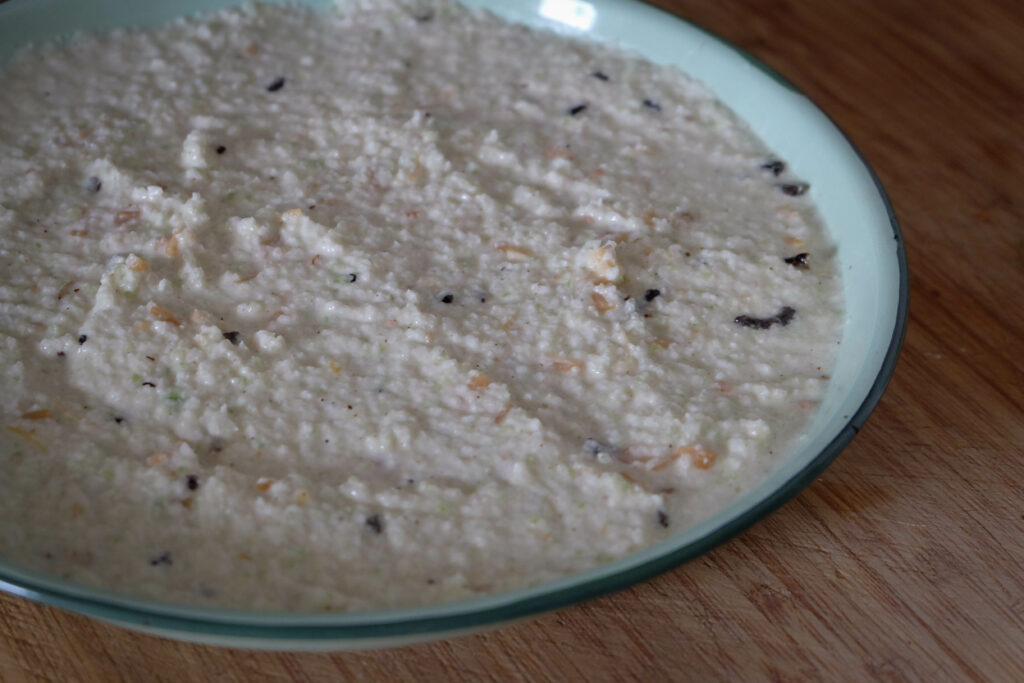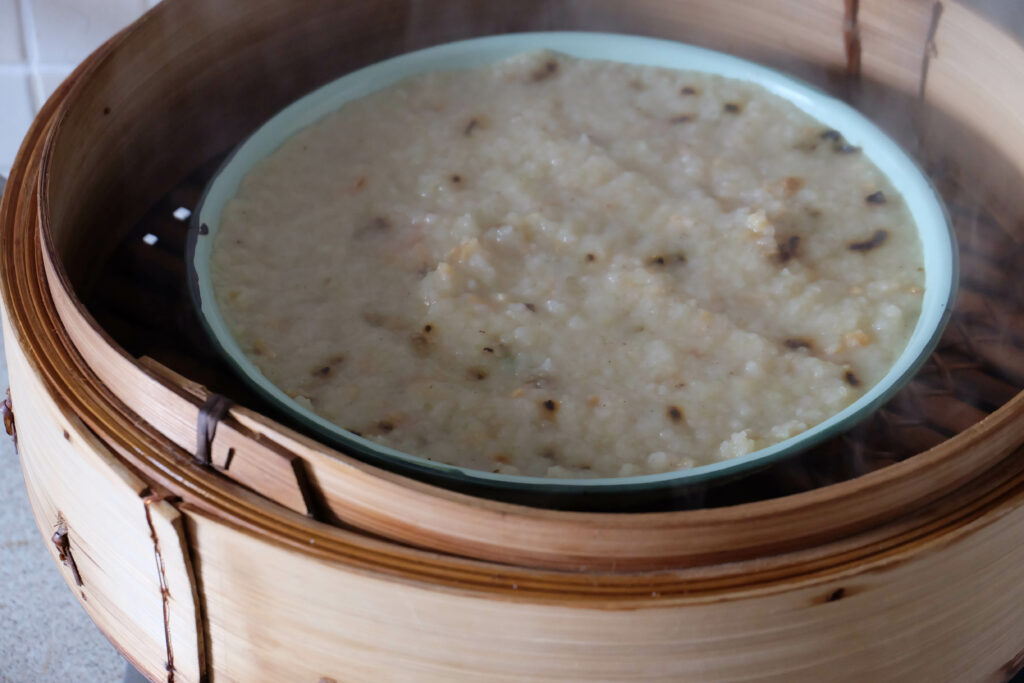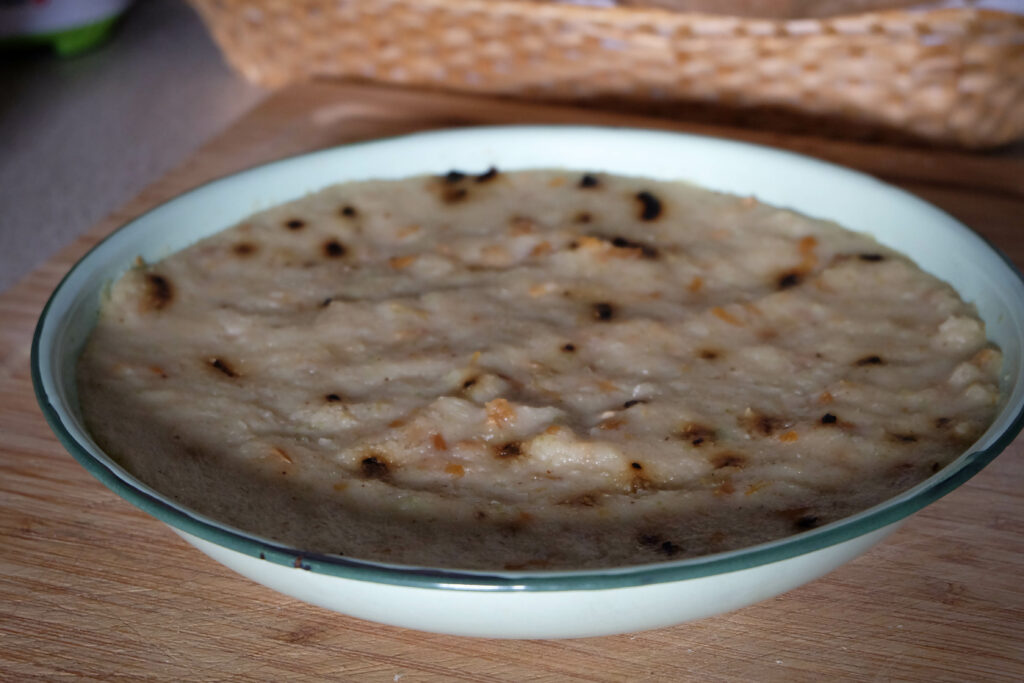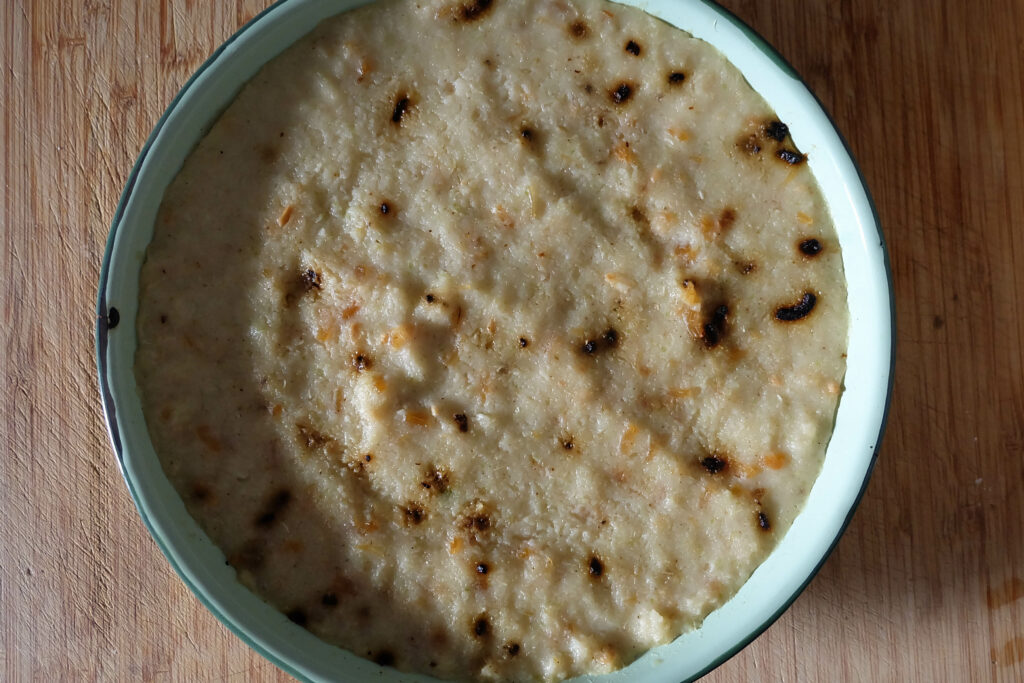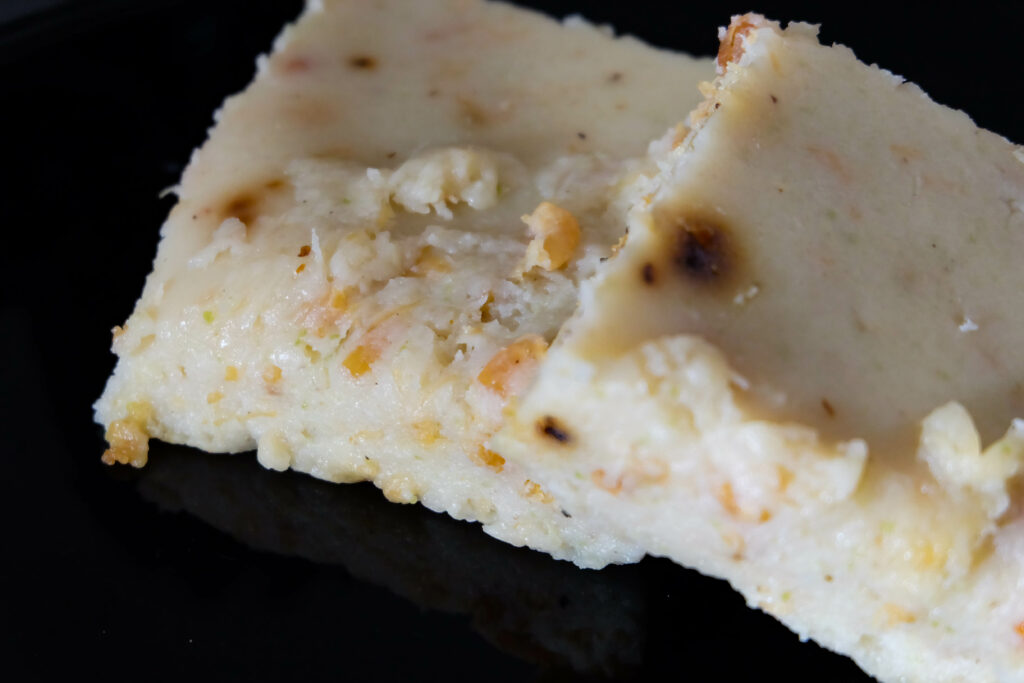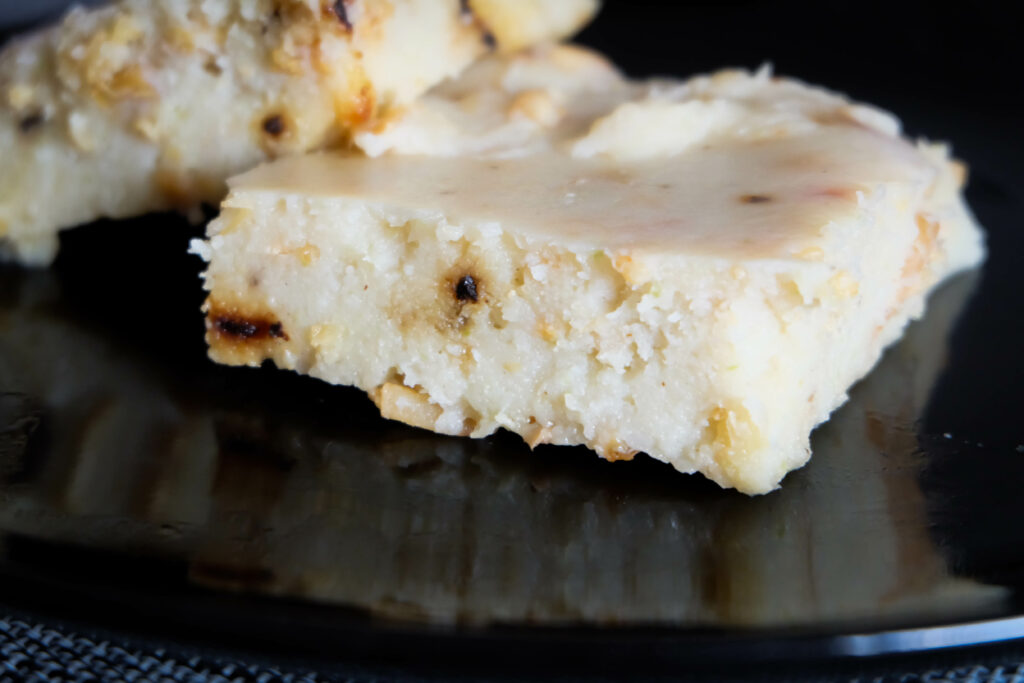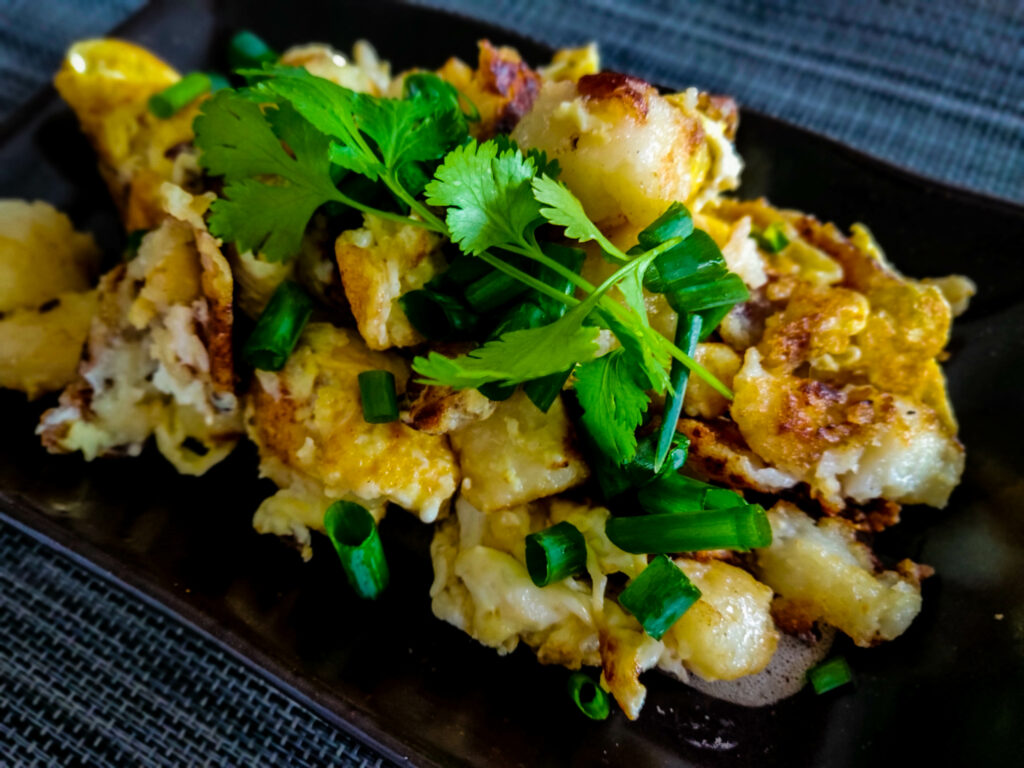There is a dish that has continually been the favourite of Minnan people for the past millenium, whether or not they have been absorbed into other cultures, and that is ’tsaitaogwey’ 菜頭粿/菜头粿: daikon cake.
What is Tsaitaogwey (daikon cake) 菜頭粿?
Tsaitaogwey is basically a steamed daikon cake. The name ’tsaitaogwey’ is its Hokkien name, meaning ‘daikon 菜頭’ and ‘cake 粿’. In Cantonese and Mandarin Chinese, it is called lobakgou and luobogao 萝卜糕 respectively, with the same meaning.
In Singapore, due to the low standard of English spoken there, it has taken on the horrific misnomer of ’carrot cake’ – a direct, literal translation from its Cantonese/Mandarin name, as carrots and daikons have the same name in Chinese. Tsaitaogwey is also often transliterated as ‘chai tau kway’.
Tsaitaogwey (daikon cake) 菜頭粿 is an ancient Minnan dish
Many people claim that Tsaitaogwey is a Teochew dish, because of the proliferation of the dish there. Teochew people are a branch of Minnan 闽南 people who have moved to the Canton (‘Guangdong’ 广东) region from their ancestral homeland in southern Fujian. The migration probably took place around 580-700AD.
The old Hokkien saying ‘潮州福建祖’ – the ancestors of the Teochew are in Fujian – attests to this migration.
However, the fact that this dish is present throughout the whole wider Minnan-speaking area – in Fujian itself and on the island of Taiwan, shows that this is a very ancient Minnan dish that predates that migration. Why is it also eaten in Canton then? Ancient Cantonese did not eat tsaitaogwey. Historians found that the northern population of Canton was in fact naturalised Minnan migrants. Chaozhou, or ’Teochew’ is a remote pocket of population where the Minnan language survived.
By introducing Tsaitaogwey (daikon cake) into the Cantonese cuisine, it took on Cantonese ingredients, such as Cantonese sausage and bacon. So today, ‘lobakgou’ 萝卜糕 as it is known in Cantonese, is Tsaitaogwey with bits of bacon and mushrooms – which is never done in its original form.
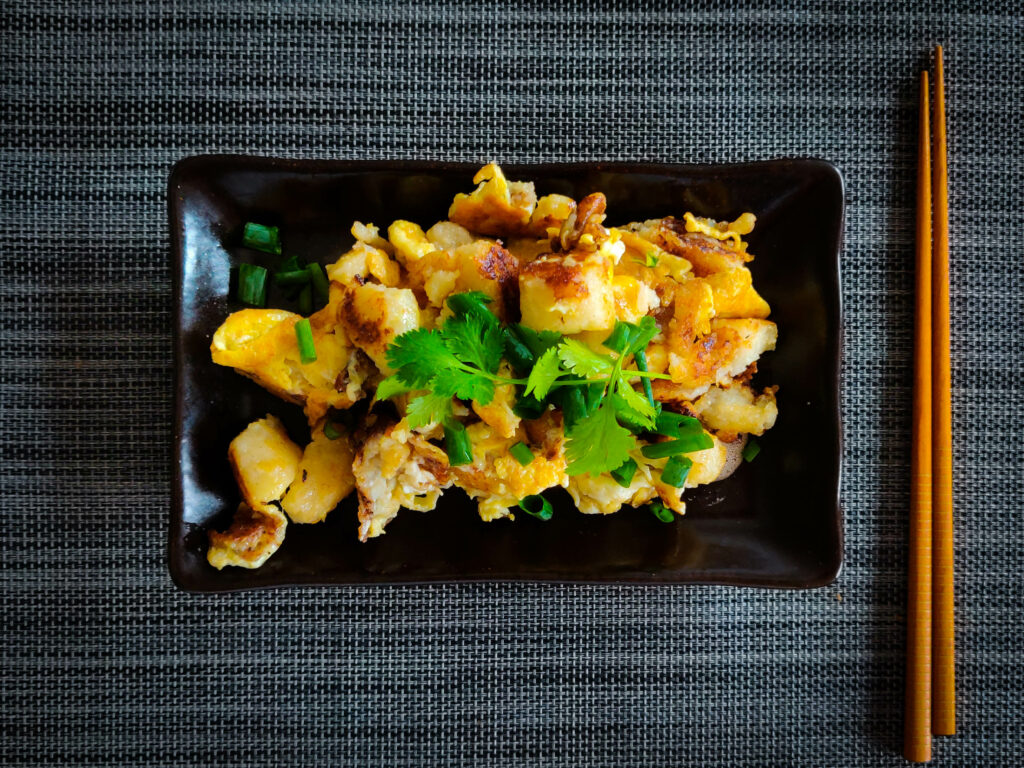
Making Tsaitaogwey (daikon cake) 菜頭粿 was a yearly affair
Contrary to the trend today, whether you are in Singapore, Taipei or Chaozhou, Tsaitaogwey (daikon cake) 菜頭粿 was never a street food.
Ancient Hokkien people only ate it in winter and made it as a “new year’s cake” 年糕 to celebrate new year’s day.
This is because the Hokkien word for daikon ’tsaitao’ 菜頭 is a homonym for ’auspicious signs’ 彩頭. Eating tsaitaogwey brings one luck and prosperity in the coming year.
Hence an old Hokkien Minnan saying that still lingers in Fujian and Taiwan that bears witness to its ancient role as a ‘new year’s cake’: ‘菜頭粿,好彩頭’ – ’Tsaitaogwey, Good auspicious signs’.
Daikons are a winter food
Another reason that Tsaitaogwey (daikon cake) 菜頭粿 was a new year’s dish is its chief ingredient: the daikon
The Daikon doesn’t have an English name because it is native only to East Asia, and it is not even remotely related to the European radish or to carrots. Throughout China, Korea and Japan, daikons are eaten in winter and considered an important source of vitamins in the cold winter months.
Several proverbs about daikons highlight East Asians’ esteem of this humble root vegetable:
- 小人参: Little ginseng
- 萝卜进城,大夫关门: The daikon enters the city, the doctor closes his door
- 吃着萝卜喝着茶,气得大夫满街爬: Eat the daikon and drink tea, drive the doctor mad into the streets
The most useful proverb that you should know and that I live by is: 冬吃萝卜夏吃姜, meaning ’Eat your daikon in winter and your ginger in summer’
This folk wisdom was proven by the most famous Chinese physician of all times Li Shizhen 李时珍 (1518 – 1593). In his ‘Compendium of Materia Medica’ 本草纲目, he wrote about the synergy between daikon and ginger:
圃人种莱菔,六月下种,秋采苗,冬掘根
The gardener plants the “laifu” 莱菔 (ancient name for daikon): he sows in summer, they sprout in autumn, and he harvests the roots in winter.
多食莱菔动气,惟生姜能制其毒
Consume more daikon to move the chi. Only raw ginger can purge the toxins.
What Li Shizhen meant was: consume the daikon throughout winter to prevent the toxins from taking root in your body, when summer comes, consume ginger to purge them all out.
In this sense, Tsaitaogwey (daikon cake) 菜頭粿 is truly a dish that brings forth rebirth! It is not only a celebratory dish that welcomes the new year, it signifies renewal for your digestive system.
Now that you know about the Minnan origin of Tsaitaogwey (daikon cake) 菜頭粿, its beginnings as a new year’s dish and its health benefits, onwards to the recipe!
A few ways to prepare your Tsaitaogwey (daikon cake) 菜頭粿
The basic recipe below is for the plain Tsaitaogwey (daikon cake) 菜頭粿. With the plain Tsaitaogwey (daikon cake) 菜頭粿, you can:
- Eat it immediately.
- Serve pan-fried, drizzled with some sweet soy sauce: Pan-fried Tsaitaogwey (daikon cake) 煎菜頭粿 (see recipe below)
- With eggs: Stir-fried Tsaitaogwey (daikon cake) 蛋炒菜头粿 (white version)
- With eggs and sweet soy sauce: Stir-fried Tsaitaogwey (daikon cake) 蛋炒菜头粿 (dark version)
- Add ingredients to this basic recipe to turn it Cantonese style, after which you can either eat it after steaming or pan-fried: Lobakgou 萝卜糕
I will provide links to the recipes mentioned above as well.
Basic Recipe of Tsaitaogwey (daikon cake) 菜頭粿
Ingredients:
- 500g white daikon, peeled
- 150g rice flour
- 1tbs tapioca flour or wheat starch (for firmer texture)
- 300ml water (or dashi or chicken stock)
- 1tsp salt
- 1tsp white pepper powder
- 1tsp chicken powder (optional)
Serving: 4 persons
Instructions:
- Grind your peeled daikon very finely in a food processor with 300ml of water.
- Heat up a non-stick pan and slowly cook the ground daikon over medium fire for 15 minutes to cook and soften the daikon.
- Put a sieve over a bowl and pour the cooked daikon over the sieve. Use a spoon to press out the water which is collected in the bowl. Leave to cool completely.
- In a mixing bowl, mix your rice flour, tapioca flour or wheat starch, salt, pepper and chicken powder together with the the cooled ground daikon.
- Add 300ml of your daikon water (top up with water if it has evaporated when cooking) to the mixture and mix well.
- Pour in your daikon mixture into a metal (preferably) steaming tray. Allow 2cm from the edge for it to rise. A good thickness of the mixture is between 3-5cm.
- Put in enough water into your steamer or wok and steam over medium heat for 50 minutes.
- Once done, allow the daikon cake to cool completely. You can either use it immediately, or refrigerate it overnight to get rid of the excess moisture.
- Cut into blocks and choose any of the above mentioned ways to enjoy your Tsaitaogwey (daikon cake) 菜頭粿.
With your newly–prepared Tsaitaogwey (daikon cake) 菜頭粿, you can make a whole lot of different dishes out of them!
Tip: Wrap your unused Tsaitaogwey (daikon cake) 菜頭粿 in plastic wrap to make sure they do not dry up and place them in the fridge. Use them up within 3 days. If not, store them in the freezer.
Recipe: Pan-fried Tsaitaogwey (daikon cake) 煎菜頭粿
Ingredients:
- Tsaitaogwey (daikon cake) 菜頭粿 (cut in blocks of 3cm thick)
- 2tbs vegetable oil
- Garnish: sweet soy sauce
Instructions:
- Heat up a pan with oil
- Pan fry your Tsaitaogwey (daikon cake) 菜頭粿 on all sides until it is entirely crispy
- Serve on a plate with a drizzle of sweet soy sauce
Recipe: Cantonese Daikon Cake: Lobakgou 萝卜糕
The Cantonese version of the Minnan daikon cake features added ingredients inside the cake itself. You can pick and choose one, a few or all of the ingredients below. Decide what you like best. I would cut out the chicken powder and reduce the salt to half a teaspoon if you plan to add savoury ingredients into your Lobakgou 萝卜糕.
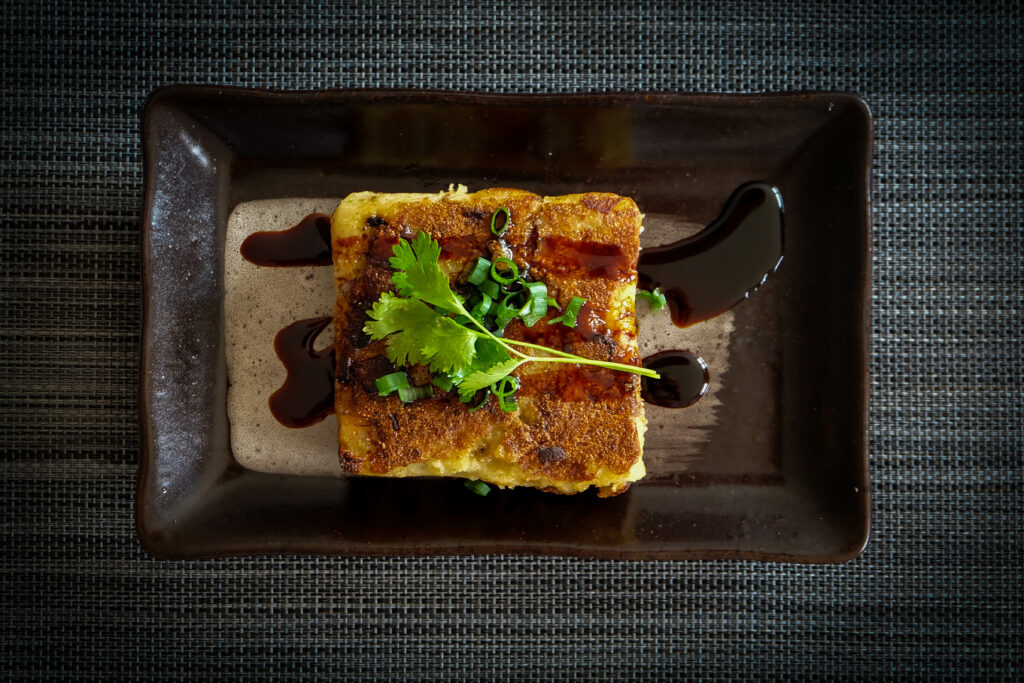
Additional ingredients:
- 2tbs dried shrimps
- 2tbs dried scallops
- 2tbs Cantonese bacon 腊肉, finely diced
- 2tbs deep-fried shallots (store-bought or homemade)
- 2tbs deep-fried garlic (store-bought or homemade)
Instructions:
- Follow the basic steps of the plain Tsaitaogwey (daikon cake) 菜頭粿 recipe above.
- Before you start, rinse then soak the dried shrimps and/or scallops in 200ml of hot water until soft. Take them out and loosely chop them into finer pieces. Save the soaking water and add it to the daikon water. Make sure the daikon water remains at 300ml, not more.
- Add your ingredients into the flour and daikon mixture. Mix well before putting it into a steaming plate for steaming.
- The rest of the steps are the same.
Recipe: Stir-fried Tsaitaogwey (daikon cake) 蛋炒菜头粿
In Singapore, you can get to taste the stir-fried version of the Tsaitaogwey (daikon cake) 菜头粿. It exists in either white (fish sauce) or dark (with sweet soy sauce) version.
